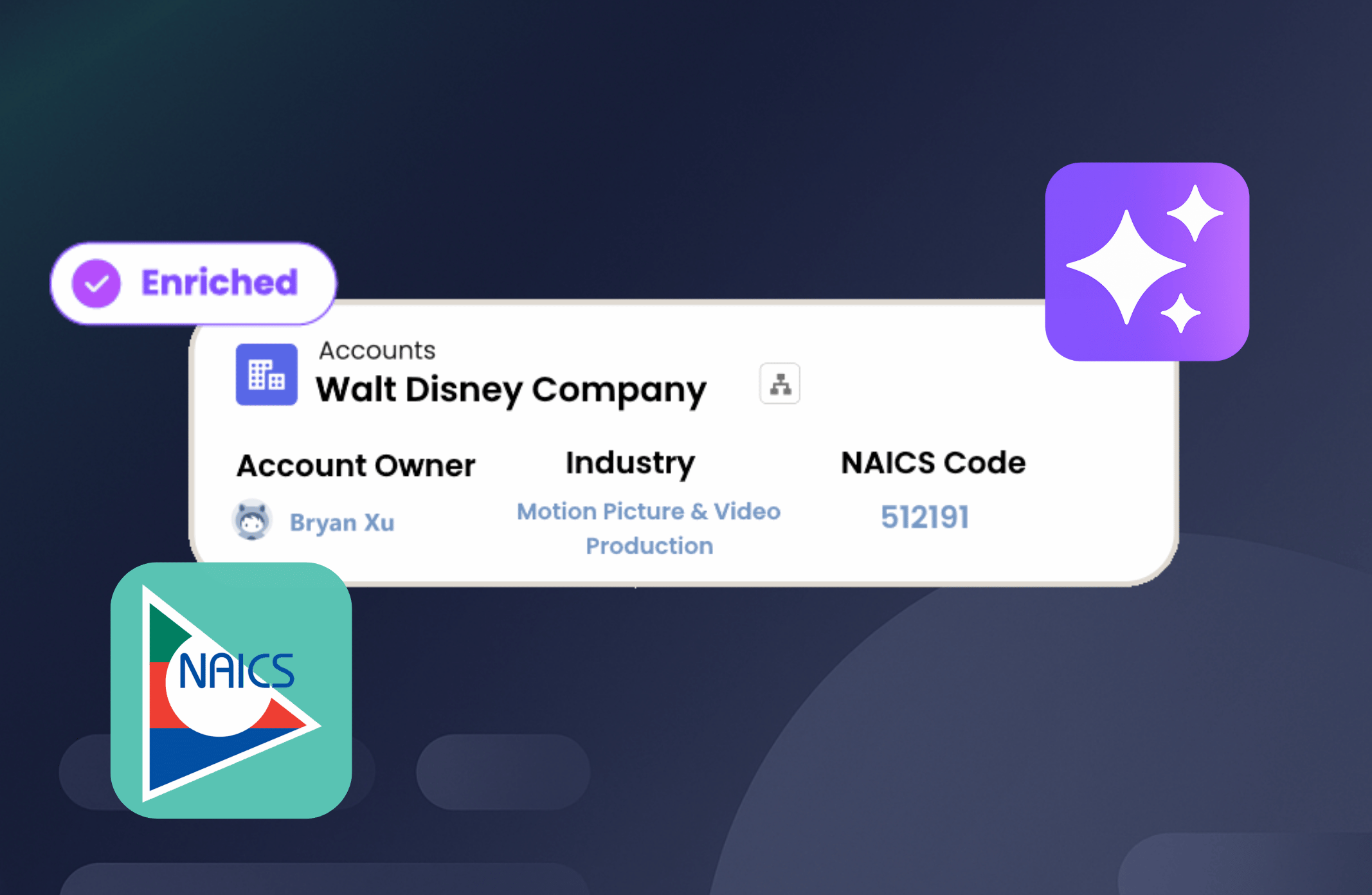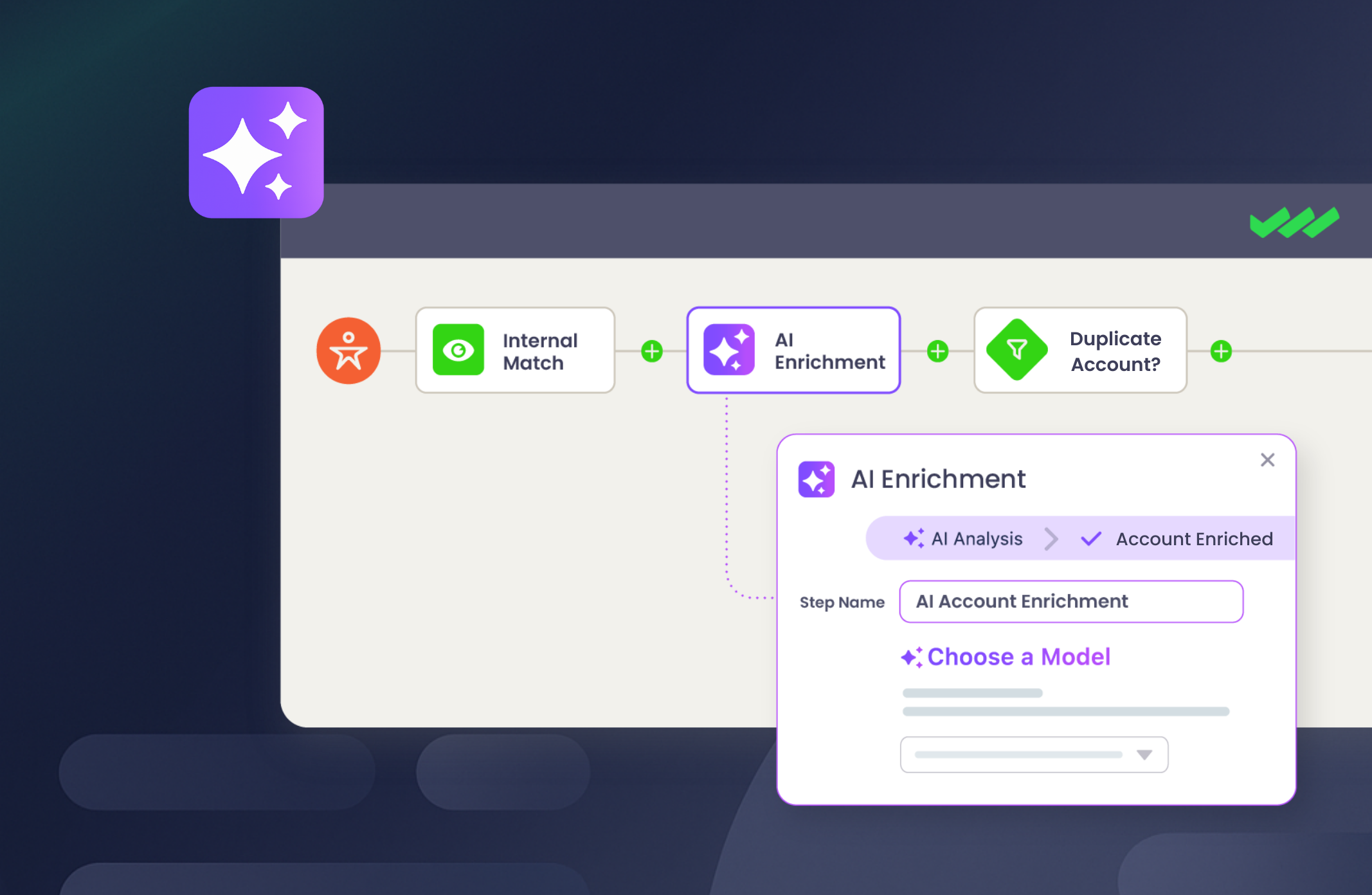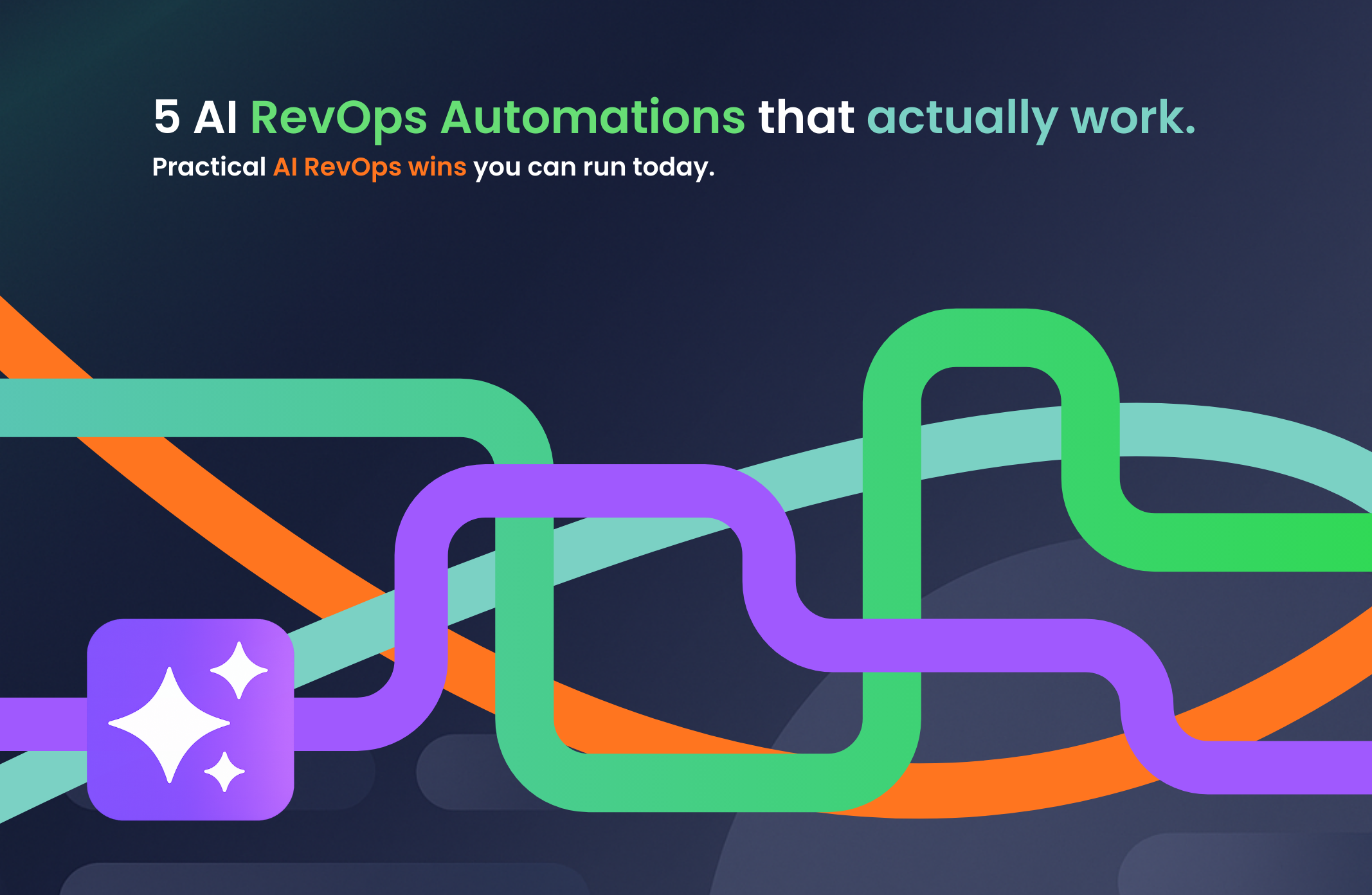When you’re a scaling enterprise business, leads are coming at you faster than a Formula 1 car is serviced at a pit stop—a matter of 2 to 3 seconds.
Times that one car by hundreds or even thousands, and you’ve got yourself a queue of cars expecting to be serviced in record time.
While 2 to 3 seconds is optimal for the world’s fastest car tune-up, the equivalent gold standard response is a close 5 minutes in the B2B selling world. Comparatively, sounds ok, right? But any RevOps or Sales Ops leader knows that’s a herculean effort at scale.
Moving fast paves the way to deliver exceptional service that wins the race to revenue.
And that’s the case whether we’re talking about cars or customers. To make sure you win the race to revenue and hit that sales podium, you need to know where your current lead routing process is creating friction.
It’s less likely it’s the people working the pit themselves, and more about the tools to set them up for success.
That’s where round robin comes in. Let’s dig into the leading reasons why you need round robin to fuel your speed to lead, and ultimately, your revenue engine.
And we’re not talking just any round robin. You’re an enterprise-level business, so you need round robin strategies that let you do more. And do it faster.
Speaking of more, read on.
Top 3 Reasons You Need A Flexible, Robust Round Robin To Speed Up and Sell More

1. Respond First and Close the Rep Response Gap
With 50% of potential buyers choosing the vendor that responds to them first, speed has long been a no-brainer. Couple that with increasing volumes of leads, and you have a massive challenge to get the right leads to the right reps in 5 minutes or less.
As complexity and volume of leads increase, so does your reliance on queues – and the amount of time a lead sits without a response waiting to be manually assigned. The best practice to keep your speed up is always to assign a lead to an actual human being when possible.
Why? You’ve probably heard it before…
The queue is where leads go to die (along with your missed revenue potential).
Once in a queue, a lead can sit there until it’s picked up by a rep. This leaves a big open accountability gap as reps cherry-pick the best leads and leave the rest left behind for someone else.
That is if a rep even responds at all. Often, “someone else” ends up being a direct competitor who gets there first.
You get the picture. Queues create a myriad of problems that slow down your response times:
- Reps cherry-picking the best leads
- Unequal distribution of leads
- Manual triaging and assignment by someone on Sales Ops
- Misassigned, misrouted, or not assigned at all
All that to say, a perfectly good but fleeting lead is trying to grab your rep’s attention.
You can’t blame them. The queue is built to facilitate a “waiting window” rather than built to facilitate the customer’s expectations— the 5-minute window. Instead, leads are stuck in a bottleneck, squeezed dry by time.
To close the rep response gap, you need to use round robin assignment.
According to Salesforce Help, round robin uses multiple fields and assignment rules so that “each new lead is assigned to a different user until everyone has been assigned the same amount, and the cycle repeats.” Distribution to teams, users, and queues are under the expectation of equal distribution.
The good? By assigning each new lead to a different owner evenly, you’ll avoid the pitfalls of Salesforce queues, give each rep an equal opportunity, and cut back on the number of assignment rules you need to manage.
The caveat? Setting it up in Salesforce can take a ridiculous amount of time and is plagued with way more considerations than you have time for. For a high-growth company, it just doesn’t deliver fast enough. If you’re aiming to hit that rep response window of 5 minutes or less – you’re going to have to go beyond regular round robin rules in Salesforce.
Here’s a tip to help your reps speed up and sell more:
Use a rep response timer like Complete Leads, with a timer directly on the lead page layout to create accountability and ensure your reps are hitting their target response times.

Suddenly, say hello to accountability and watch your rep response window shorten.
Now that you know your inbound lead data is flowing, you need to go beyond equal distribution. You need the power to do more.
Here’s why.
2. Scaling Fast Requires a Sophisticated Round Robin
When it comes to ensuring your reps are fully equipped to speed up, there are way more nuances required than a basic round robin strategy can provide.
You’ve got complex, evolving go-to-market rules, so here are 5 RevOps considerations for a sophisticated round robin strategy:
- Is a sales rep at max capacity for leads?
- Is one of your sales reps on vacation?
- Is a lead outside of your go-to-market territory plan?
- Is a high-quality lead going to a sales rep that had to run out for an emergency?
Ah yes, exceptions to the rule do exist.
Some reps are more senior and have a higher chance of conversion while junior reps ramp up. Other reps are new and might need a cap on lead assignment.
The list goes on.
Let’s paint a picture of just how game-changing this can be.
For Asana, a SaaS project management enterprise, their assignment rules changed regularly. With complex territories and constant changes with sales reps leaving or getting assigned to different territories, intricate lead assignment “exceptions” became impossible to keep up within Salesforce.
The problem we had is that we were growing, and our previous routing tool didn’t scale with us. – Chris Burger, Head of Revenue Ops, Asana
Instead, they implemented a more sophisticated round robin using Complete Leads:
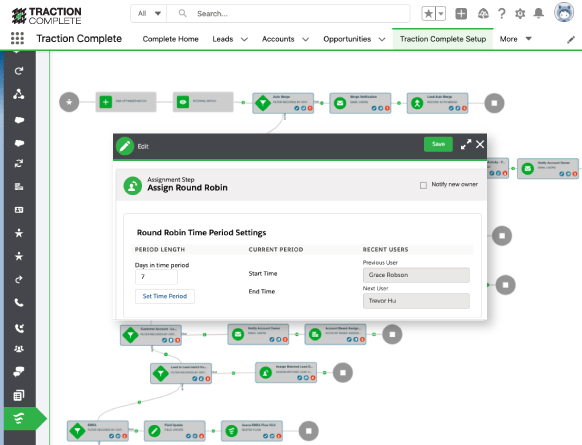
Asana was able to easily overhaul their lead routing process, reducing the number of assignment rules required by being able to tailor to their needs more effectively.
It wasn’t just the functionality, but the usability within those functions. – Chris Burger, Head of Revenue Operations, Asana
Instead, they implemented a more sophisticated round robin using Complete Leads:
With Complete Leads, Asana was able to utilize dynamic round robin rules that went beyond equal distribution.
With their new system in place, Asana can now:
Route leads based on rep availability
Instead of accounts being assigned to a sales rep who is on vacation, or a rep that no longer works at Asana, those leads can automatically go to the right rep based on office hours and availability.
Use weighted round robin to distribute leads
Asana can give their top SDR’s more leads because they are responding fast and converting more leads into meetings booked (in other words, lead distribution is based on performance).
They can now route based on specialty, those with the most knowledgeable background for a specific product, or any other desired field.
Implement max lead quotas
Asana has a great number of incoming leads. With Complete Leads, they can set a max number of leads per sales rep so the rep isn’t overloaded with new leads before they have a chance to contact them all.
Use dynamic groups
By matching leads directly to their user groups, Asana can dramatically cut back on the number of territory rules they need to manage.
All of these strategies improve sales effectiveness for Asana, while reducing hundreds of hours of manual work triaging leads.
Another round robin tip?
Not using leads in salesforce? No problem. You can round robin any object.
Bypass leads if you don’t use them, and round robin your opportunities or custom objects like partners. Or round robin accounts based on your go-to-market criteria when you’re rolling out new territories. The power to speed up isn’t limited to your leads.
Need another reason to get started?
3. Better Usability To Power Your RevOps Engine
Speed matters not just for sales reps, but for RevOps too. Manually triaging leads slow down rep response and Ops teams as well.
As a RevOps leader, you need to make sure you’re efficient and effective at handling fast ‘tune-ups’ to ensure your speed to lead KPIs are being met.
What’s under the round robin hood matters if it’s going to help you make critical assignment changes faster.
For Veracode, a global security enterprise, their Salesforce environment had evolved and become quite elaborate over time. Resultantly, building complex formulas in Salesforce isn’t optimal.

Every time they needed to make a change to a rule, round robin or otherwise, they had to hire a developer to write code.
What’s worse, the built-up legacy code in the system caused sync issues and conflicts with other tools that they had connected to Salesforce.
Setting up a round robin in Salesforce just isn’t robust enough to handle more complex criteria that are required to keep your leads flowing when they hit a snag. It’s limited and cumbersome to manage—major setbacks when it comes to your speed-to-lead.
This isn’t sustainable at scale and involves tons of manual effort and wasted time. Not to mention, before a rule is implemented, it’s already changed again.
At Veracode, it’s typical to get four to five rep requests a week. Sound familiar? This process went from taking a couple of hours a week to implement to taking a few minutes per change with Complete Leads’ round robin interface.
With a constantly evolving business, Veracode found that the territories themselves changed at least once a year to multiple times a year. Once they implemented one set of assignment changes, they needed all new territories, all new owners, and this process took months with 800 to 900 rule criteria.
Something that would have taken me months took me a week to implement with Complete Leads.. It’s very fast, allows me to move very quickly, and is very flexible. It allows sales teams to get to the right leads fast. – James Maddison, Business Systems Analyst, Veracode.
What helped Veracode be able to adapt faster?
1. Drag and drop UI
Yep, a UI that doesn’t involve extensive brackets and values. It works by using an embedded visual flow, meaning that your entire lead routing strategy can be visualized on a flow chart.
2. Ability to build nested flows
Even if you already have a complex set of rules, additional rules can be added easily with a nested flow. This allows you to be unapologetically complex while keeping things clean and organized.
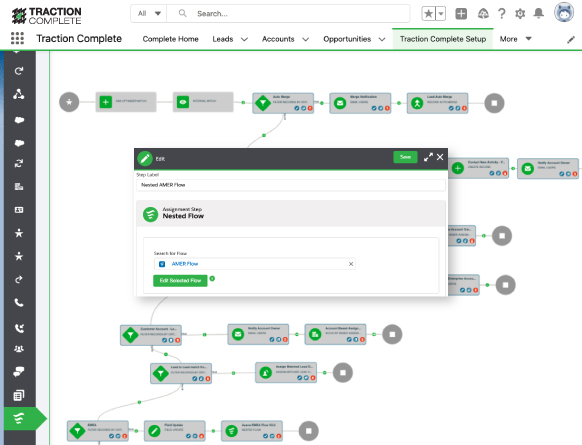
You can build multiple assignment flows for different go-to-market teams and enable managers to maintain their own rules.
As an Ops leader, not only are you able to move faster with these round robin tools but you’re also able to better optimize your overall speed-to-lead.
Speaking of speed-to-lead… Remember that rep response timer? Not only is it great for rep-facing accountability, but it’s also something you can track and optimize.
3. Monitor rep responses with a response dashboard
Re-route leads to an available salesperson if reps haven’t followed up fast enough (and this applies beyond your round robin). This is the best way to make sure your teams are honoring your SLA’s and hitting response metrics.
All of these operations have a direct impact on how fast you can implement and in turn how fast reps can act. But with Complete Leads, your lead response engine is optimized.
Here’s an idea of what you could be tracking:
- Average first response time by rep
- Average rep response by team
- Response time trends over time
- Sales qualified lead to opportunity conversion rate
- Performance against SLA’s
If you haven’t sensed by now, your third reason to implement round robin is all about enabling RevOps to step up that operational speed and help set the foundation for speed-to-lead success.
Round robin, but round robin with the ultimate usability!
The Final Word: Leave Your Competition In The Dust With A Robust Round Robin Strategy

If you want your team to leave your competition in the dust and speed up and sell more, you need a round robin—and not just any, but a more robust round robin.
Round robin = speed up = sell more = accelerate revenue.
Reps will move faster, Sales Ops will save buckets of time and effort, and both will drive more pipeline. Marketing? Don’t worry, good leads won’t be left out to dry any more. Not to mention, RevOps will rest easy knowing their revenue engine is running smoothly. It’s a win-win-win.
Together, your team will be a well-oiled rep response engine, ready to give faster service that converts.
Hey, why not shoot for 3 seconds? Just like the pros.

